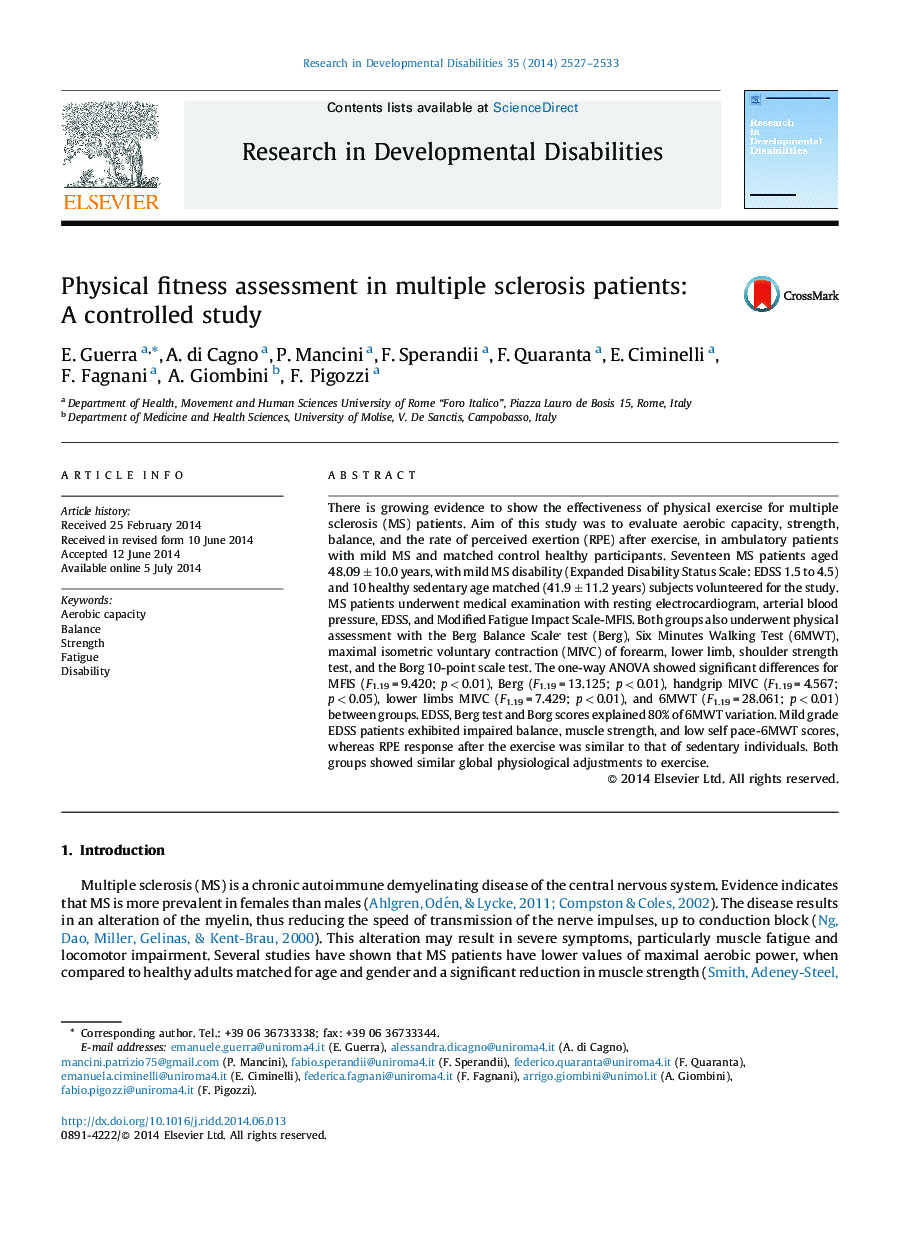| Article ID | Journal | Published Year | Pages | File Type |
|---|---|---|---|---|
| 10317376 | Research in Developmental Disabilities | 2014 | 7 Pages |
Abstract
There is growing evidence to show the effectiveness of physical exercise for multiple sclerosis (MS) patients. Aim of this study was to evaluate aerobic capacity, strength, balance, and the rate of perceived exertion (RPE) after exercise, in ambulatory patients with mild MS and matched control healthy participants. Seventeen MS patients aged 48.09 ± 10.0 years, with mild MS disability (Expanded Disability Status Scale: EDSS 1.5 to 4.5) and 10 healthy sedentary age matched (41.9 ± 11.2 years) subjects volunteered for the study. MS patients underwent medical examination with resting electrocardiogram, arterial blood pressure, EDSS, and Modified Fatigue Impact Scale-MFIS. Both groups also underwent physical assessment with the Berg Balance Scale, test (Berg), Six Minutes Walking Test (6MWT), maximal isometric voluntary contraction (MIVC) of forearm, lower limb, shoulder strength test, and the Borg 10-point scale test. The one-way ANOVA showed significant differences for MFIS (F1.19 = 9.420; p < 0.01), Berg (F1.19 = 13.125; p < 0.01), handgrip MIVC (F1.19 = 4.567; p < 0.05), lower limbs MIVC (F1.19 = 7.429; p < 0.01), and 6MWT (F1.19 = 28.061; p < 0.01) between groups. EDSS, Berg test and Borg scores explained 80% of 6MWT variation. Mild grade EDSS patients exhibited impaired balance, muscle strength, and low self pace-6MWT scores, whereas RPE response after the exercise was similar to that of sedentary individuals. Both groups showed similar global physiological adjustments to exercise.
Related Topics
Life Sciences
Neuroscience
Behavioral Neuroscience
Authors
E. Guerra, A. di Cagno, P. Mancini, F. Sperandii, F. Quaranta, E. Ciminelli, F. Fagnani, A. Giombini, F. Pigozzi,
